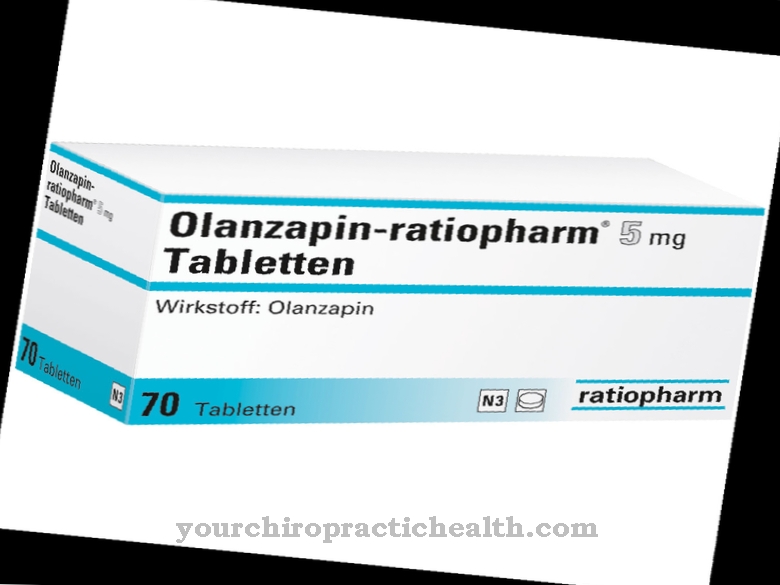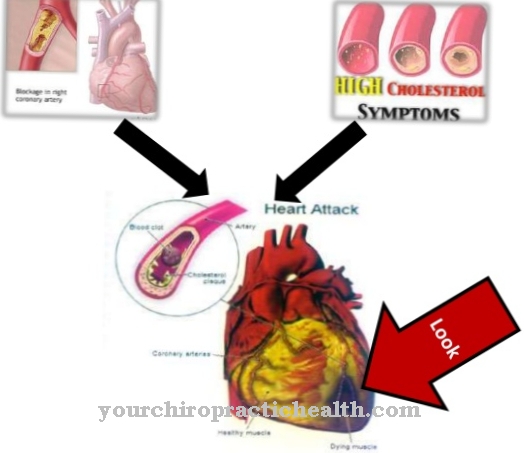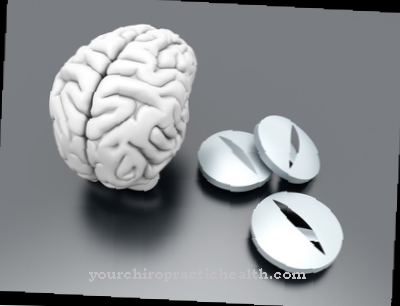S-adenosyl methionine is a metabolically active product of the essential sulfur-containing amino acid methionine. It serves as an important methyl group donor in the human body and is involved in the synthesis of adrenaline and acetylcholine, but also in various detoxification reactions.
What is S-adenosyl methionine?

S-adenosylmethionine, SAM or AdoMet for short, was first discovered and described in 1952 by the Italian Giulio Cantoni. Living cells can produce the active key product themselves, whereas in humans production and further processing primarily take place in the liver. In total, more than 40 metabolic reactions are known in which SAM is involved.
In all of these reactions, the methyl group of S-adenosylmethionine is transferred to other substances. These nucleic acids, proteins and lipids in turn change their chemical properties, such as water solubility. In order to be able to produce S-adenosylmethionine, the body needs folic acid and vitamin B12 in sufficient quantities.
Pharmacological effect
The cells produce SAM using the enzyme methionine adenosyl transferase from the amino acid methionine and the nucleotide ATP. The highly reactive methyl group of S-adenosylmethionine can now be transferred to various metabolic products by means of enzymatic reactions.
S-adenosyl methionine, for example, plays a crucial role in the formation of numerous neurotransmitters and hormones. However, the transfer of the methyl group from SAM is also necessary for the synthesis of lecithins, which are a crucial component of all cell membranes. The active ingredient also helps the cells to inactivate certain areas of the genetic make-up by transferring its methyl group to the DNA. The energy-rich creatine of the muscles is also formed with the help of the methyl group transfer from S-adenosylmethionine.
On the other hand, a SAM-dependent enzyme inactivates the tissue hormone histamine, which plays a crucial role in allergic reactions, among other things. SAM also promotes the production of the body's own glutathione. This antioxidant protects the cells from various pollutants. Numerous toxic substances are also rendered harmless to the body by transferring the methyl group of S-adenosylmethionine directly to them.
This makes the previously lipophilic toxins water-soluble and can easily be excreted in the urine or stool. If the active substance S-adenosylmethionine releases its methyl group, it is itself converted into S-adenosylhomocysteine, and subsequently into adenosine and homocysteine. The homocysteine can then be changed back to methionine or the amino acid cysteine in a further reaction.
Medical application & use
It is true that healthy people can produce SAM in sufficient quantities themselves from the sulfur-containing amino acid methionine. But there are diseases in which this endogenous production seems to be disturbed: in Alzheimer's disease, for example, a comparatively low endogenous amount of S-adenosylmethionine can often be found.
Taking the drug is supposed to compensate for this deficiency. In the treatment of depression, the active ingredient increases serum levels of serotonin and dopamine, among other things. But SAM is also used for various liver diseases, as it improves detoxification.
Arthritis patients particularly appreciate the pain relieving effect of the drug. S-adenosyl methionine is also approved as a dietary supplement in tablet form in many countries. Since the body's own production of the active ingredient decreases with age, the orally ingested SAM should compensate for a possible deficiency. A simultaneous intake of vitamin B12, vitamin B6 and folic acid is recommended.
You can find your medication here
➔ Medicines against depressive moods and to lighten the moodRisks & side effects
In general, S-adenosylmethionine is well tolerated. However, people with bipolar disorder can develop manic symptoms from taking the drug. This can also occur in patients who have not previously been known to have bipolar disorder.
Above all, cognitive dysfunction can persist even after the drug has been discontinued. Other side effects that can occur, especially with high doses, are stomach discomfort, gas, diarrhea and headache. There have also been reports of increased anxiety and allergic reactions. To avoid possible sleep disturbances, it is recommended to take it in the morning.
The effects of long-term use of the drug are not yet known. SAM should not be taken at the same time as other drugs that affect the serotonin system. Otherwise a serotonergic syndrome can develop. When interacting with antidepressants, the side effects can also increase.



























